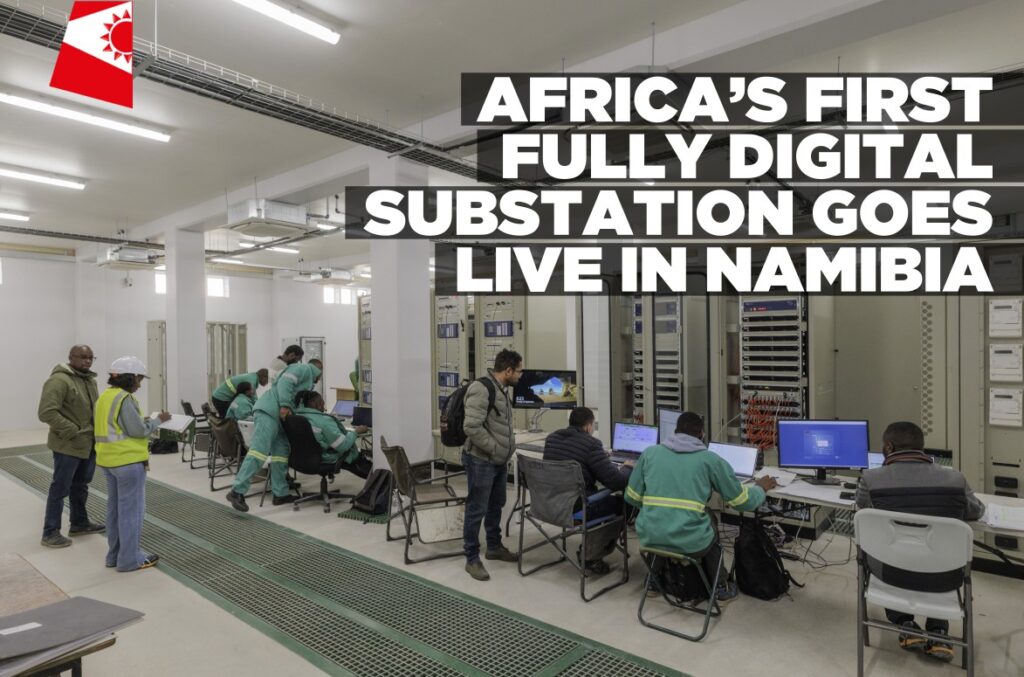By Staff Reporter
Copyright web

Staff Reporter
NAMPOWER has successfully commissioned and energised its new indoor 132/66/33 kV Sekelduin Substation, located east of Swakopmund. The substation is Africa’s first fully digital facility, representing a total investment of N$394 million and a significant milestone for the continent, designed and built entirely by African engineers.
The Sekelduin Substation strengthens the NamPower transmission network, unlocks coastal load growth, and enhances grid reliability in the Erongo region. The facility employs cutting-edge digital technology, including process bus applications in line with IEC 61850 standards, Mixed Technology Switchgear (MTS), compact hybrid AIS/GIS, and Metal-Enclosed GIS at 33 kV, with ACTOM serving as the principal equipment supplier and integrator.
Photos: NamPower
Fed from the existing Kuiseb Substation, approximately 35 km south-east, Sekelduin features two parallel 132 kV overhead lines, improving N-1 robustness and reducing single contingency exposure for coastal nodes.
The digital design utilises process and station buses, which reduce copper cabling, improve remote asset monitoring, enhance fault location accuracy, and strengthen cyber-secure SCADA integration. This setup also provides a platform for future artificial intelligence (AI) and machine learning (ML) integration, placing NamPower among the leading utilities globally.
A hybrid architecture underpins the substation’s secondary system, integrating digital and conventional hard-wired protection systems based on IEC 61850. The main protection system uses IEC 61850-9-2LE with redundant process and station buses via merging units and process interface units, employing sampled values and GOOSE communication. Backup protection combines a station bus and GOOSE with hard-wired connections to conventional CTs and VTs.
The Sekelduin Substation operates as a 132/66/33 kV indoor switching station. The 132 kV and 66 kV circuits use compact mixed technology gas-insulated switchgear (MTS), while the 33 kV circuit features gas-insulated fixed-pattern metal-enclosed switchgear. Two voltage transformation levels are derived from the 132 kV busbar: 66 kV and 33 kV. High-voltage equipment is housed indoors in a custom-designed building, constructed by Nexus Building Contractors with design support from SCE Consulting Engineers and TDx Power, protecting the equipment from the corrosive coastal and desert environment.
Sekelduin Substation represents a transformative step in Namibia’s transmission infrastructure. Conceived, engineered, and delivered by Africans, it demonstrates that the continent can design and implement world-class digital grid systems. The facility sets a new operational benchmark, offering a scalable, AI/ML-ready, cyber-secure blueprint that will future-proof Namibia’s electricity network.



